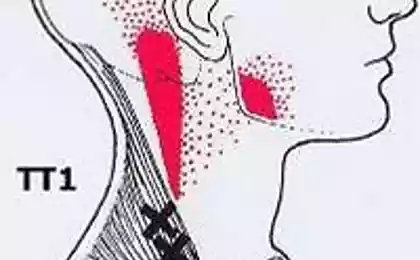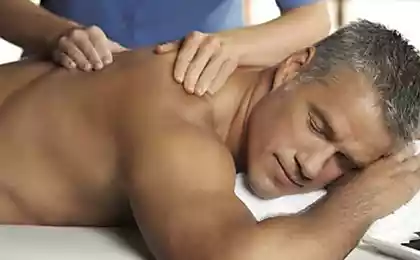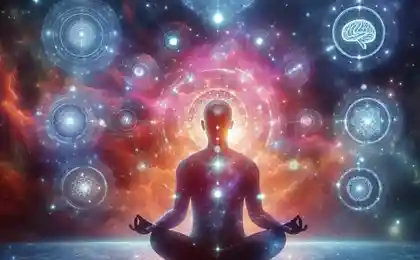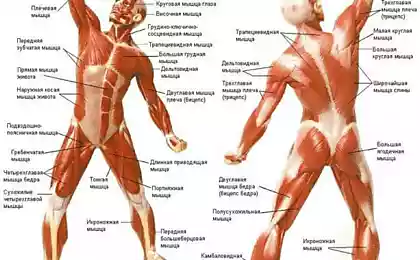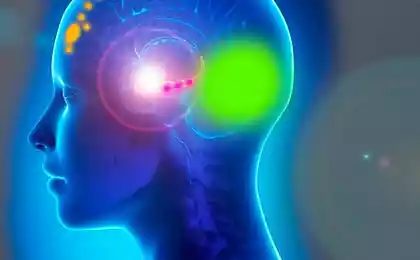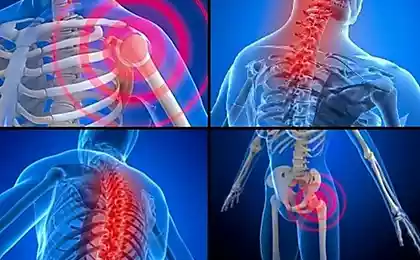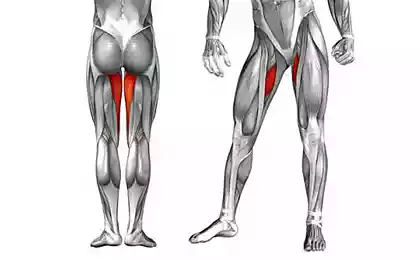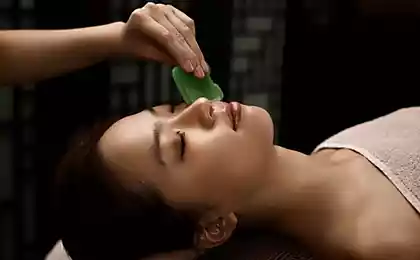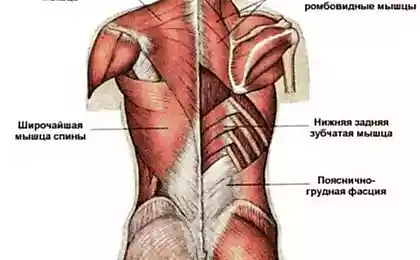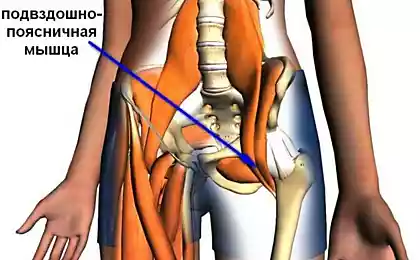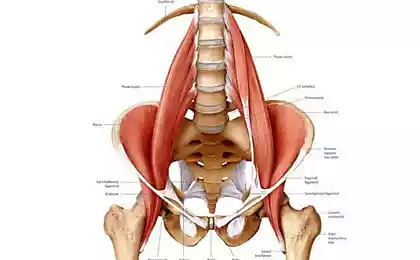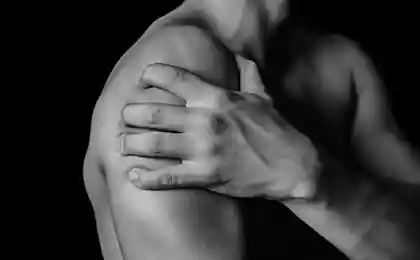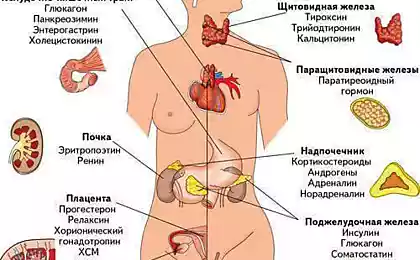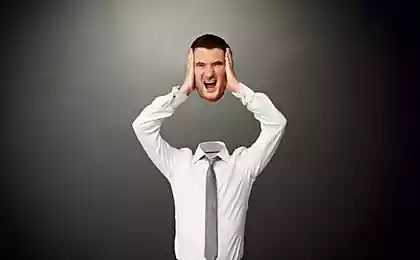203
Test: How to distinguish back pain from heart pain
To distinguish spinal pain from heart pain, the following test is recommended:
Raise your hand on the side of pain over your head. With the four fingers of the second hand, embrace the large pectoral muscle, move it from the axillary region to the middle of the chest and touch, moving four fingers outside, the small pectoral muscle, which can be defined as sharply painful, tense, dense, sometimes with small seals in the form of nodules. (Figure 1)
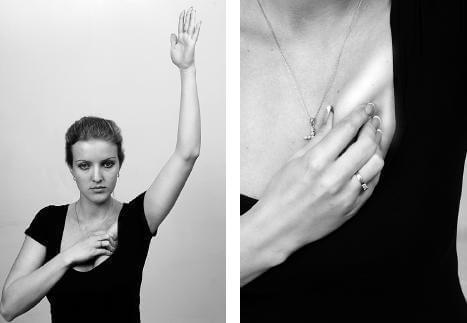
In some cases, compression of the vascular-nerve bundle by the scapula-hyoid muscle may develop. In this case, there are pain and numbness in the shoulder and neck, aggravated by the withdrawal of the hand back and the head in the opposite direction of pain.
In this case, a differential diagnosis of pain in the front of the chest should be carried out in a medical institution. It is necessary to find out whether they arise from compression of the vascular nerve bundle with the lower part of the shoulder plexus in a tumor and more often cancer of the top of the lungs (lung x-ray) or from expansion (aneurysm) and thrombosis of the subclavian artery with swelling of the arm and pain in the neck (ultrasound double scan of the subclavian artery).
Diagnosis of scapula-hyoid muscle syndrome is carried out lying on the back on the edge of the couch with the arm removed from the body by 90 °, and the head turned in the opposite direction of pain. The absence of pain in this position indicates the normal functioning of the scapula-hyoid muscle.
Therapeutic effects on muscles in pain in the chest
Attention.! Exercises in the chest can be performed only after agreement with the attending physician!
Exercise for the Liberation of the Resolved Small Breast Muscle
The exercise is performed sitting on the couch, the hand is raised up and bent at a right angle in the elbow joint. The other hand fixes the shoulder joint area. On inhalation for 9-11 seconds, raise your eyes up, against resistance to your hand try to increase the amplitude of bending in the shoulder joint. On exhalation 6-8 seconds relaxation, increase the amplitude of extension in the shoulder joint, eyes down. Repeat 3-6 times. (Figure 2)

Exercise to relieve pain in the subclinical area with small chest muscle syndrome
Exercise is performed lying on your back. With the pads of a healthy hand, gently touch (palp) the muscles of the front of the chest near the sternum on the side of the pain to identify the most affected areas, highlighting the most painful (launch point). Then, with four bent fingers of the hand from the side opposite to the pain, grab the most protruding superficial part of the large pectoral muscle and move it to the middle line.
With the pad of the middle finger of the other hand on the side of pain, conduct a longitudinal linear stroking, moving up and down the neck along the lateral zones for 1 minute, 6-15 times. Having felt the most painful zone, carry out transverse lateral stroking in the transverse direction, for 1 minute 6-15 times.
Then, strok the "rubank" in the longitudinal direction up or down, with great effort in the direction where the pain is caused, for 1 minute 6-15 times. After that, with the edge of the middle finger near the nail, find the most painful point and conduct a semicircular stroking, as if “twisting” and “twisting” the screw clockwise and counterclockwise for 1 minute 6-15 times. (Figure 3)
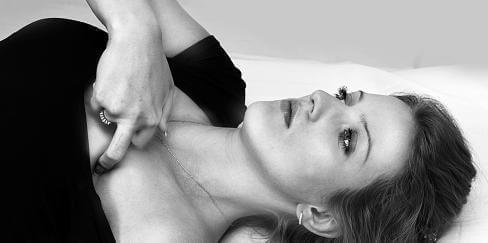
After taking a break and resting for 2-3 minutes, take the starting position, feel the most painful zone and conduct a vibration reception, capturing part of the small sternum muscle with the tips of the fingers (on the side of pain), informing it of oscillatory movements back and forth and rotation counterclockwise. Reception is performed within 1.5-2 minutes. (Figure 4)
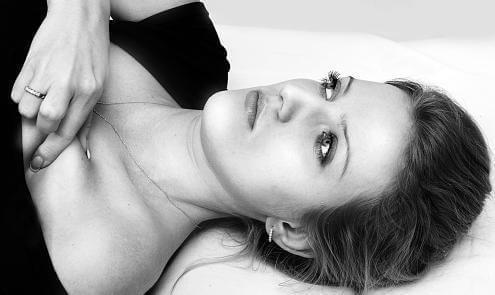
After that, with a tubercle at the base of the thumb, slow reciprocating movements with pressure on the most painful zone should be rubbed for 1.5-2 minutes.
After the preparatory part, take a break of 2-3 minutes. Determine with preliminary probing the most pronounced pain zone, straightened with the middle or index finger ("finger-needle"), take a stab before the onset of pain. As the pain decreases within 0.5-1 minutes, the pressure should be gradually increased. Press for 1-2 minutes with a force of 3 to 6 kg. (Figure 5)
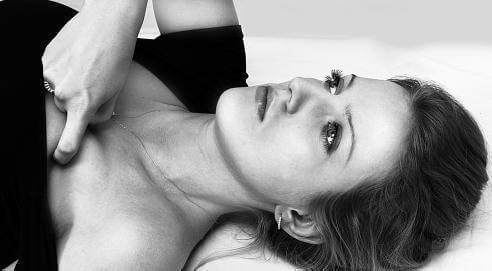
Reception is repeated 3-6 times every 2-3 hours until the complete disappearance of pain. In the absence of allergic reactions 40 minutes before the exercise, you can use: ascorbic acid (vitamin C) 1000 mg (after meals); glycine 0.3 mg; indomethacin (in candles) 50 mg; voltaren active 25 mg (after meals).
Ah. B. Sitel, The Point of Pain
René Koch: Spoon massage against flabbiness of buttocks, fat deposits on stomach and thighsHow to quickly reduce waist size: 5 recommendations
Source: vk.com/wall-23903469?offset=4140&w=wall-23903469_1053%2Fall
Raise your hand on the side of pain over your head. With the four fingers of the second hand, embrace the large pectoral muscle, move it from the axillary region to the middle of the chest and touch, moving four fingers outside, the small pectoral muscle, which can be defined as sharply painful, tense, dense, sometimes with small seals in the form of nodules. (Figure 1)

In some cases, compression of the vascular-nerve bundle by the scapula-hyoid muscle may develop. In this case, there are pain and numbness in the shoulder and neck, aggravated by the withdrawal of the hand back and the head in the opposite direction of pain.
In this case, a differential diagnosis of pain in the front of the chest should be carried out in a medical institution. It is necessary to find out whether they arise from compression of the vascular nerve bundle with the lower part of the shoulder plexus in a tumor and more often cancer of the top of the lungs (lung x-ray) or from expansion (aneurysm) and thrombosis of the subclavian artery with swelling of the arm and pain in the neck (ultrasound double scan of the subclavian artery).
Diagnosis of scapula-hyoid muscle syndrome is carried out lying on the back on the edge of the couch with the arm removed from the body by 90 °, and the head turned in the opposite direction of pain. The absence of pain in this position indicates the normal functioning of the scapula-hyoid muscle.
Therapeutic effects on muscles in pain in the chest
Attention.! Exercises in the chest can be performed only after agreement with the attending physician!
Exercise for the Liberation of the Resolved Small Breast Muscle
The exercise is performed sitting on the couch, the hand is raised up and bent at a right angle in the elbow joint. The other hand fixes the shoulder joint area. On inhalation for 9-11 seconds, raise your eyes up, against resistance to your hand try to increase the amplitude of bending in the shoulder joint. On exhalation 6-8 seconds relaxation, increase the amplitude of extension in the shoulder joint, eyes down. Repeat 3-6 times. (Figure 2)

Exercise to relieve pain in the subclinical area with small chest muscle syndrome
Exercise is performed lying on your back. With the pads of a healthy hand, gently touch (palp) the muscles of the front of the chest near the sternum on the side of the pain to identify the most affected areas, highlighting the most painful (launch point). Then, with four bent fingers of the hand from the side opposite to the pain, grab the most protruding superficial part of the large pectoral muscle and move it to the middle line.
With the pad of the middle finger of the other hand on the side of pain, conduct a longitudinal linear stroking, moving up and down the neck along the lateral zones for 1 minute, 6-15 times. Having felt the most painful zone, carry out transverse lateral stroking in the transverse direction, for 1 minute 6-15 times.
Then, strok the "rubank" in the longitudinal direction up or down, with great effort in the direction where the pain is caused, for 1 minute 6-15 times. After that, with the edge of the middle finger near the nail, find the most painful point and conduct a semicircular stroking, as if “twisting” and “twisting” the screw clockwise and counterclockwise for 1 minute 6-15 times. (Figure 3)

After taking a break and resting for 2-3 minutes, take the starting position, feel the most painful zone and conduct a vibration reception, capturing part of the small sternum muscle with the tips of the fingers (on the side of pain), informing it of oscillatory movements back and forth and rotation counterclockwise. Reception is performed within 1.5-2 minutes. (Figure 4)

After that, with a tubercle at the base of the thumb, slow reciprocating movements with pressure on the most painful zone should be rubbed for 1.5-2 minutes.
After the preparatory part, take a break of 2-3 minutes. Determine with preliminary probing the most pronounced pain zone, straightened with the middle or index finger ("finger-needle"), take a stab before the onset of pain. As the pain decreases within 0.5-1 minutes, the pressure should be gradually increased. Press for 1-2 minutes with a force of 3 to 6 kg. (Figure 5)

Reception is repeated 3-6 times every 2-3 hours until the complete disappearance of pain. In the absence of allergic reactions 40 minutes before the exercise, you can use: ascorbic acid (vitamin C) 1000 mg (after meals); glycine 0.3 mg; indomethacin (in candles) 50 mg; voltaren active 25 mg (after meals).
Ah. B. Sitel, The Point of Pain
René Koch: Spoon massage against flabbiness of buttocks, fat deposits on stomach and thighsHow to quickly reduce waist size: 5 recommendations
Source: vk.com/wall-23903469?offset=4140&w=wall-23903469_1053%2Fall
We have learned to endure that have forgotten how to live
"Atomic sandwiches," can reduce power consumption of computers 100 times
